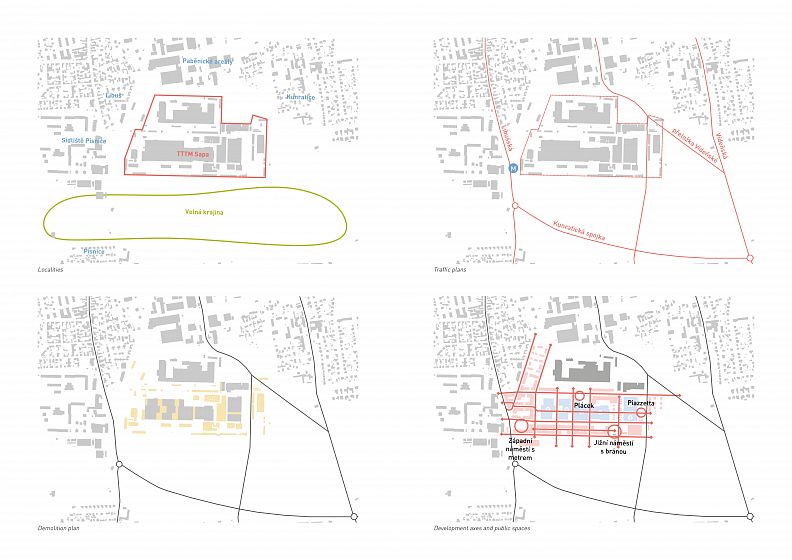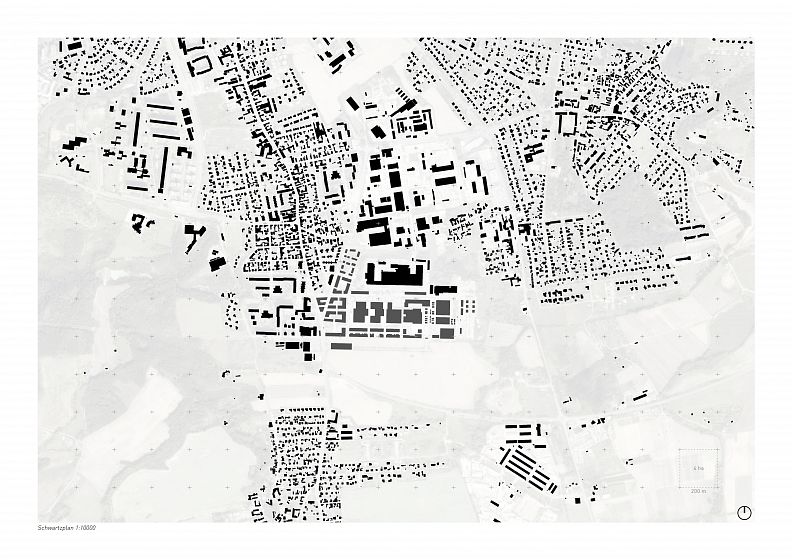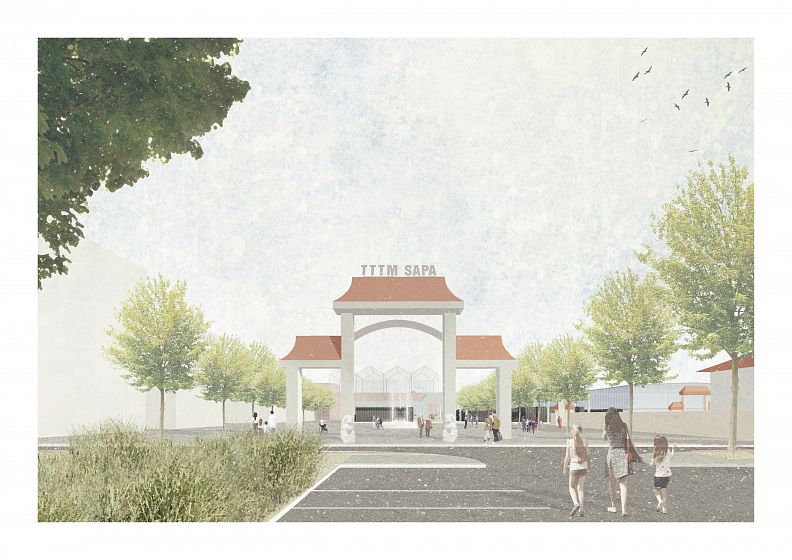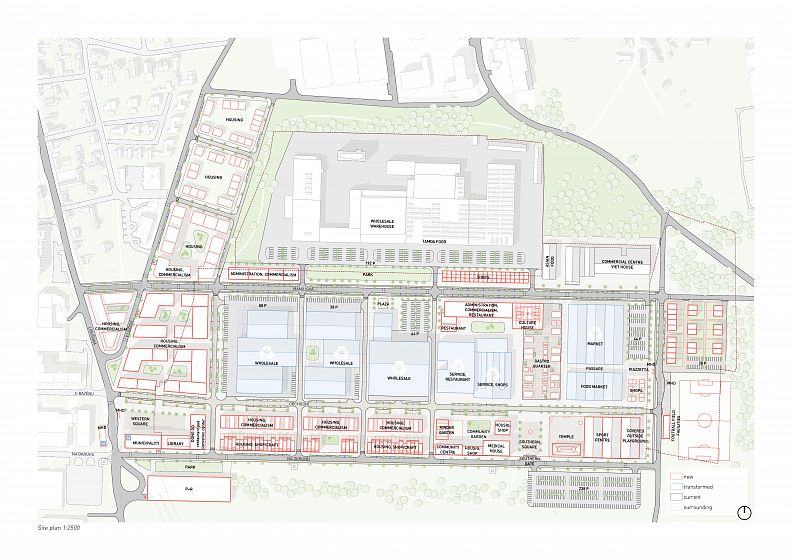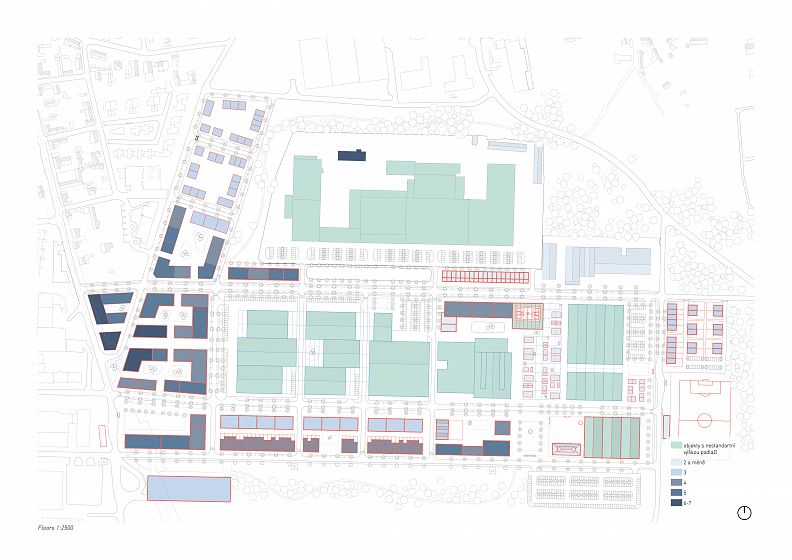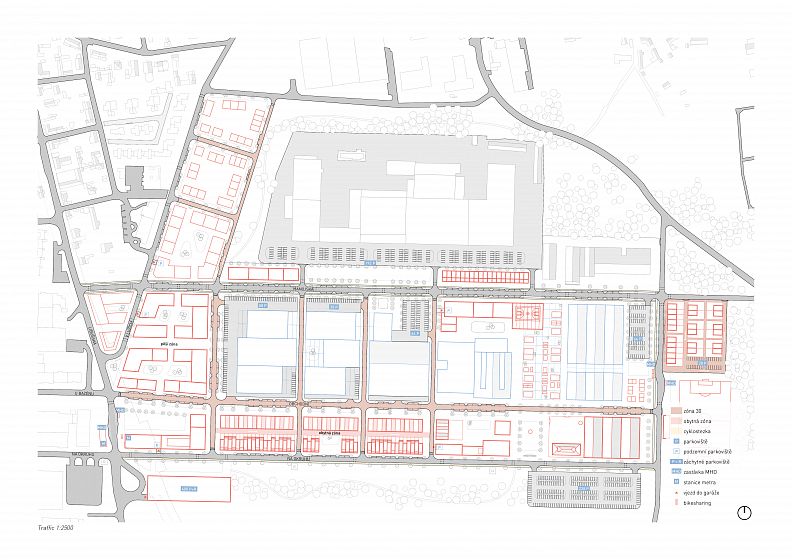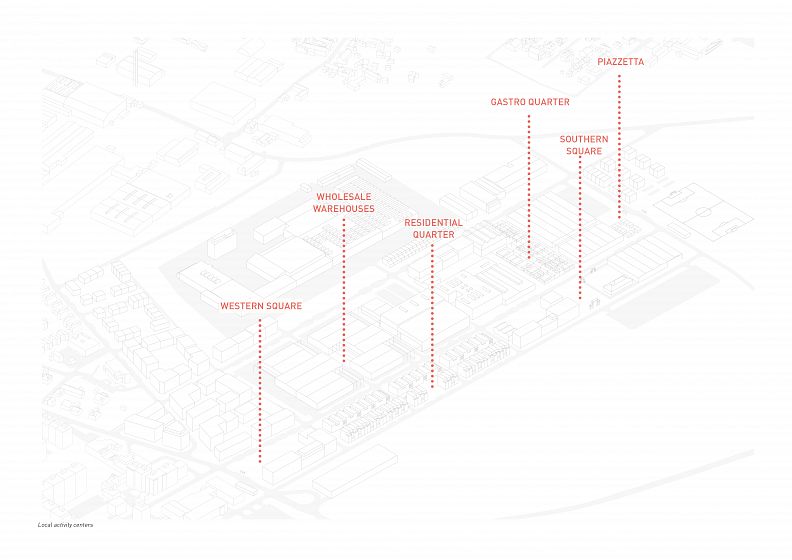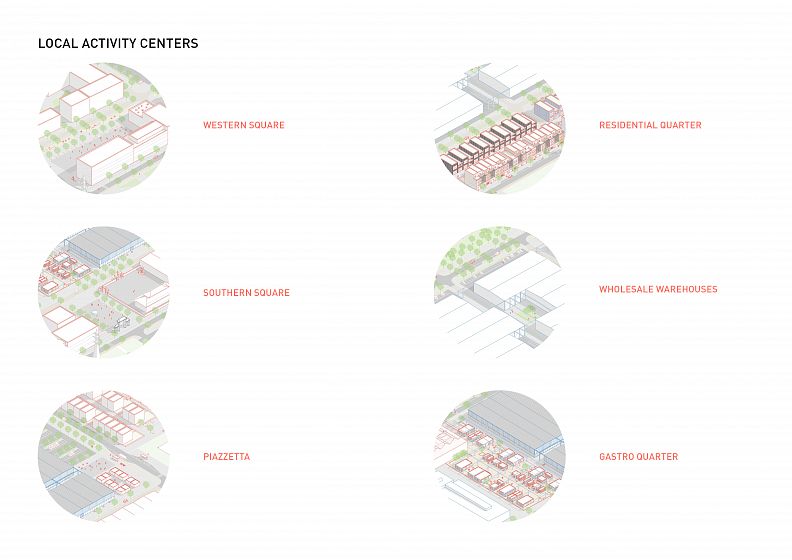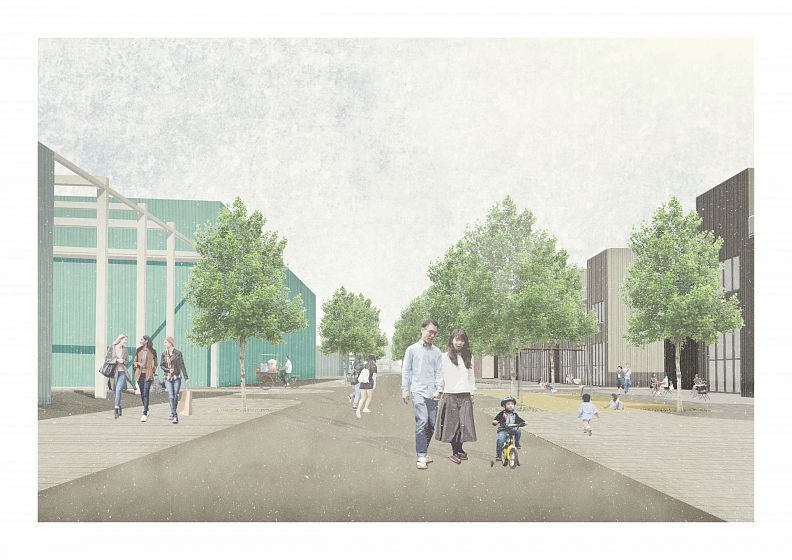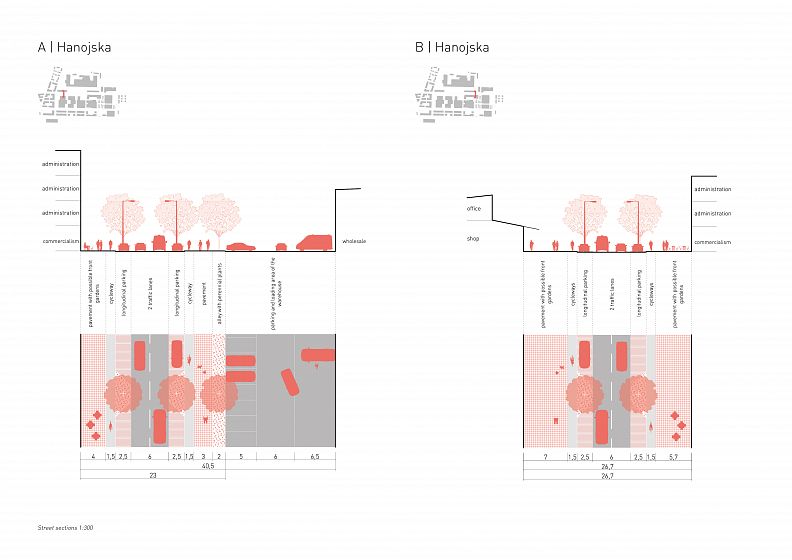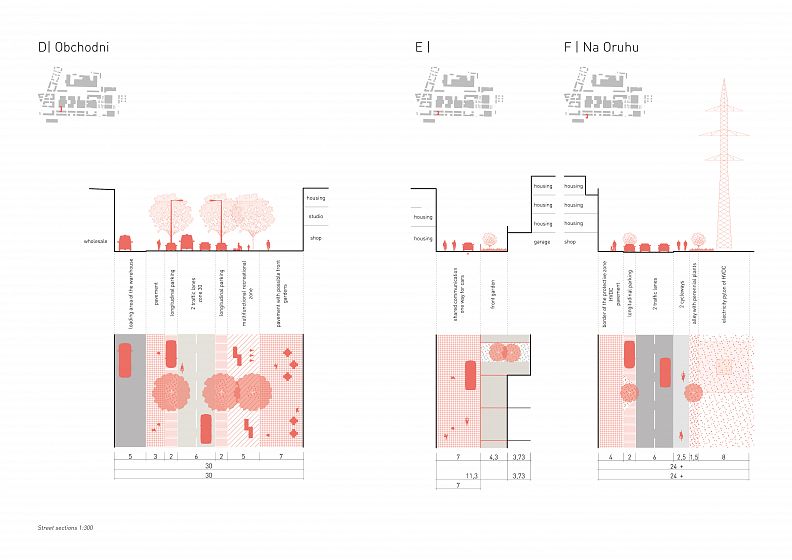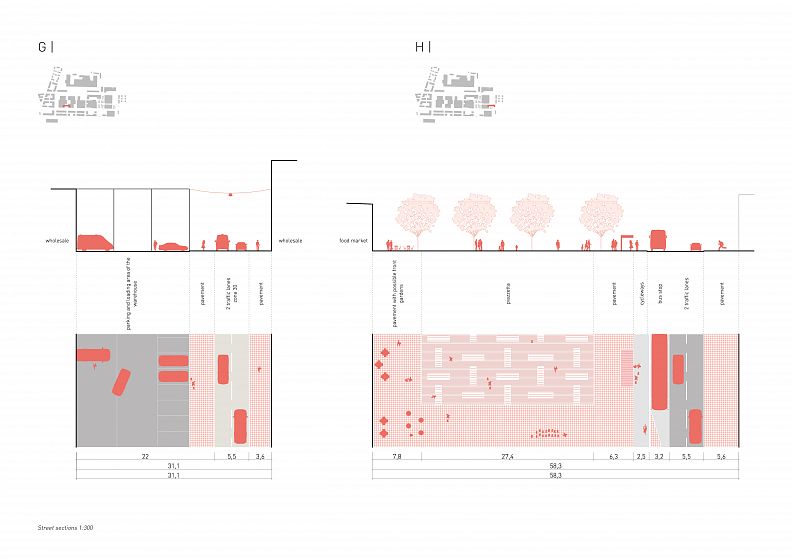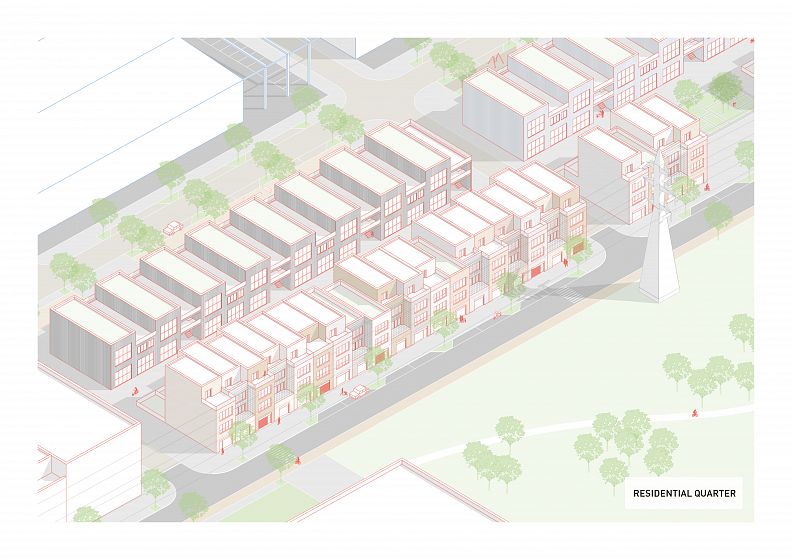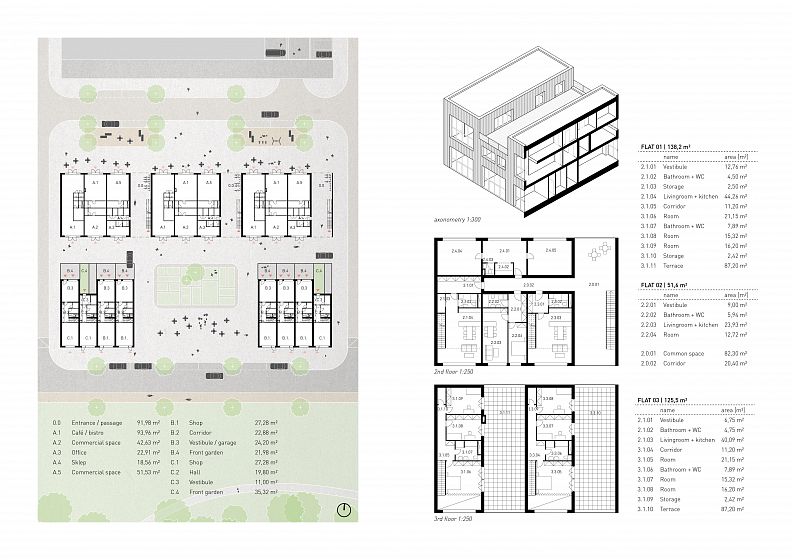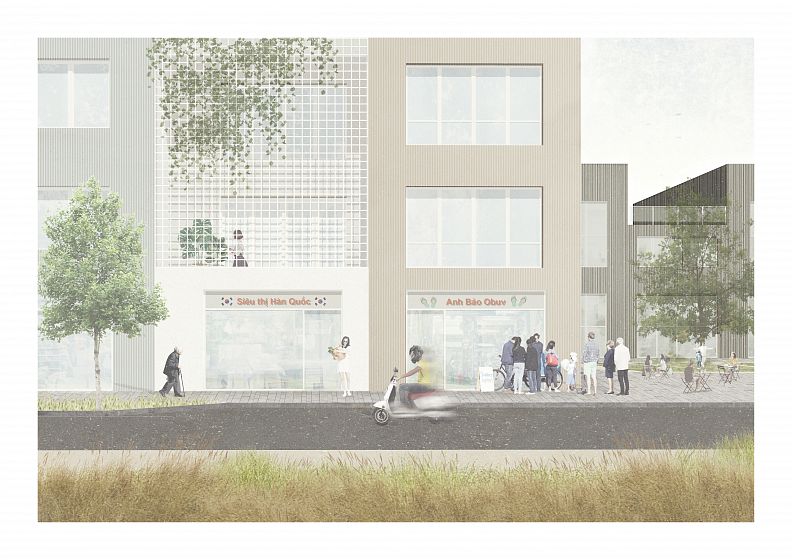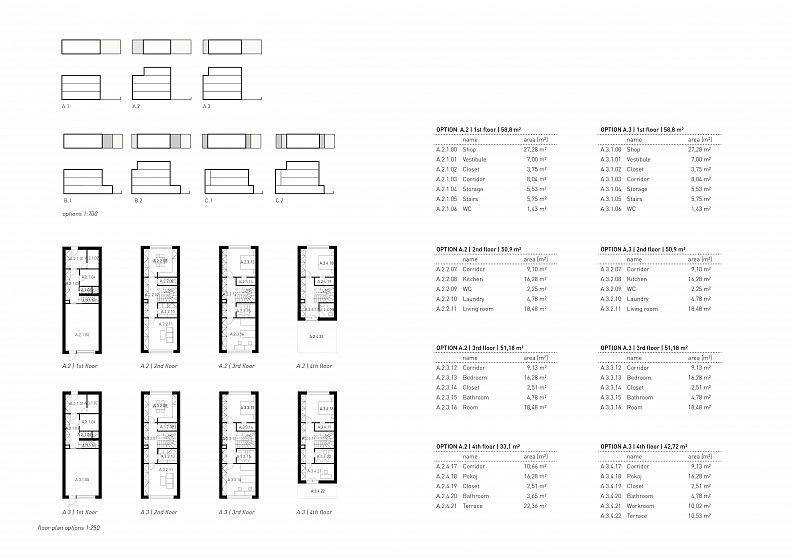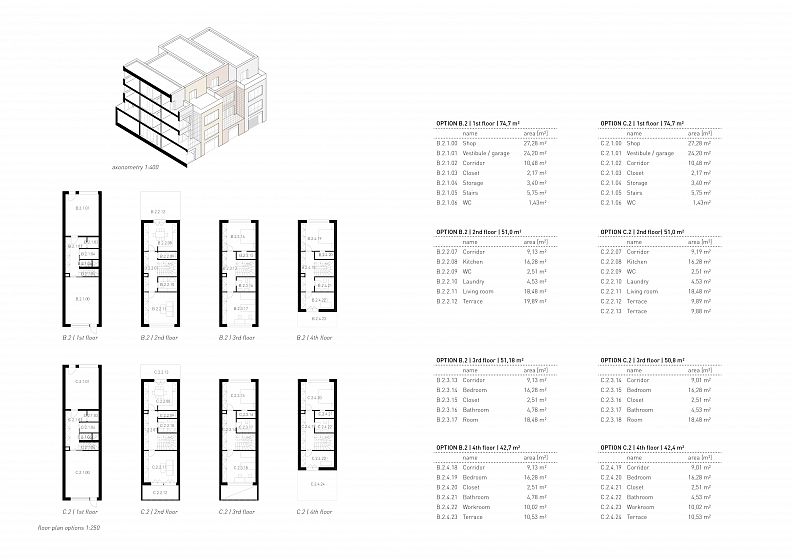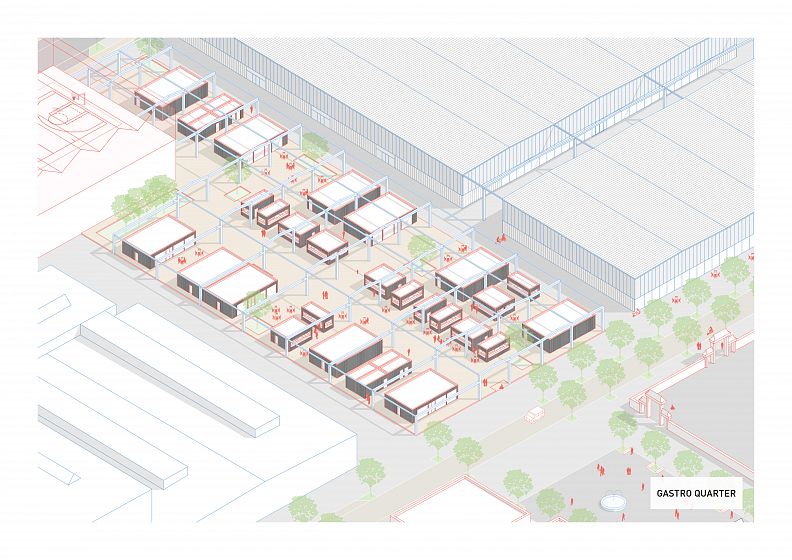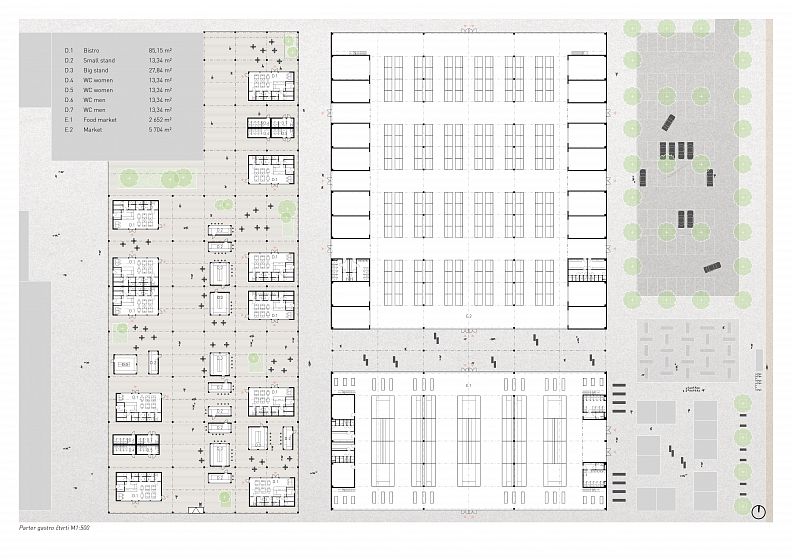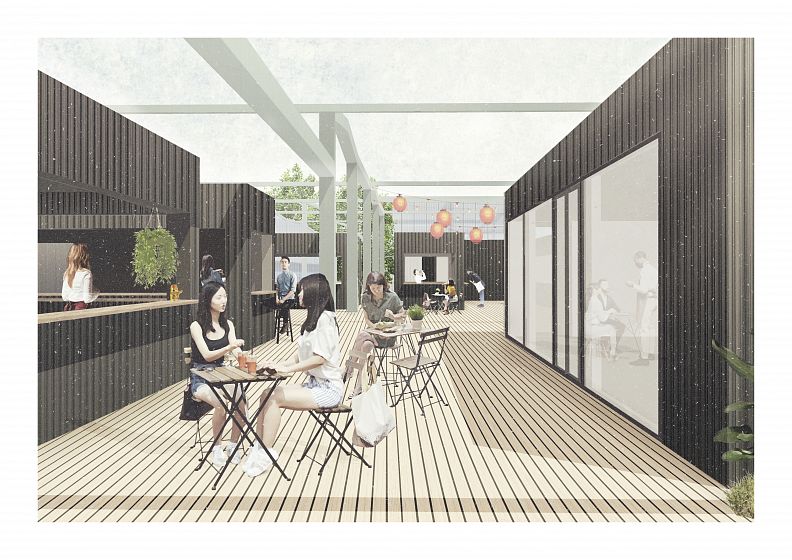Rehabilitation of TTTM Sapa

Project idea
The theme of my project is transformation and integration of the commercial centre TTTM Sapa, which is located in the area of the former Pisnice meat processing plant and Libus poultry farm in Prague, into the surrounding urban structure. The thesis also outlines the conditions for further development of the surrounding area. The aim of the design is to create a vision of a passable multifunctional urban locality with an emphasis on multiculturalism.
Project description
Plot
TTTM Sapa is located in three areas on the outskirts of Prague: Libus, Pisnice and Kunratice. The commercial centre was established on the site of the former Pisnice meat processing plant and Libuš poultry farm in Prague. In the North direction lies Pabenicke arealy which form barriers between Kunratice and Pisnice. At Sapa’s Southern border, there is a protective zone of high-voltage, direct current (HVDC) electricity. Further South and across the open area, there is locality Pisnice with a village character. In the surrounding area, the family residential housing is prevalent with the exception of the modernistic urban structure Sidliste Libus. The intention of building a new subway station is adding to the area’s lucrativeness, as well as increasing its potential of buildability and urban character.
The busy Libusska street passes through the area, which connects to the Kunraticka spojka. To relieve it, I am proposing a new communication link. I would complement the urban structure in the Western part and design loose family housing to the North, which corresponds to the surroundings. This would create four public spaces, symbolizing the four entrance gates seen in the common urbanistic structure of an Asian city. Each space welcomes visitors into local centres with a different character.
Street network and traffic
One of Sapa's main problems is chaotic car traffic and the absence of a hierarchical street network. I transformed the linear paved areas into lively streets with greenery and longitudinal parking. The new street profiles would no longer serve only car traffic. Together with Zone 30, they would calm down traffic, but also support neighbourly life and activities of the business parterre The main street, Hanojska street, originally existed only within the complex, but would now be connected to Libusska Street and to Videnska Street, thus ensuring the permeability of the site.
Parking is solved by six car parks with a total capacity of 712 parking spaces, as well as 204 longitudinal parking spaces. Under the apartment blocks, the Eastern square, the civic facilities centre and the administrative centre, there is an underground car park. In the direction from Kunraticka spojka, there is a planned P + R car park. Contrary to the intention of parking, I´m proposing a three-storey parking house with a capacity of 400 places, which will not expand into the open landscape.
Polyfunctionality
The Sapa commercial centre has the character of a production area and today its main activity is wholesale in former industrial halls, which has been supplemented over time with retail, services, gastronomy and, last but not least, civic facilities. These accompanying activities are scattered chaotically over the entire area.
An important aspect of the design was to identify local centres and develop them. The first centre is formed around the TAMDA food supermarket, which serves as a wholesale warehouse and is adjacent to the Pabenice arealy. I would keep them, edit unsuitable parking and add a residential park. The second centre is the transformation of wholesale halls. The third centre are the terrace houses and so-called “tube houses”, which were created mostly on former parking areas and are within walking distance of the metro. Terrace houses form a citadel between the halls and smaller-scale housing. Its duplex apartments face either a quiet living area or terraces, providing peace and privacy to their residents. Tube houses have shops or crafts on the ground floor and are typologically based on Vietnamese town houses. The houses are available in several variants and are created in cooperation with several investors similar to the German Baugruppe. Based on individual needs, the individual houses can be personalized in collaboration with the architect, creating a diverse development. The fourth centre are the surroundings of the original Southern gate and around its civic facilities such as the medical house, community centre, kindergarten, church and sports centre. In the immediate vicinity lies a gastronomic quarter, a food market in a covered hall and a textile market. The last centre is a recreational area with a residential area, which, by its scale, corresponds to the family development in Kunratice.
Technical information
Site area: 33 ha
FUNTIONS
Wholesale: 45 950 m2
Commerce: 19 857 m2
Administration: 3 728 m2
Housing: 7 061 m2
Mixused: 17 220 m2
Civic facilities: 9 337 m2
Storage: 1 136 m2
Parking: 24 122 m2

